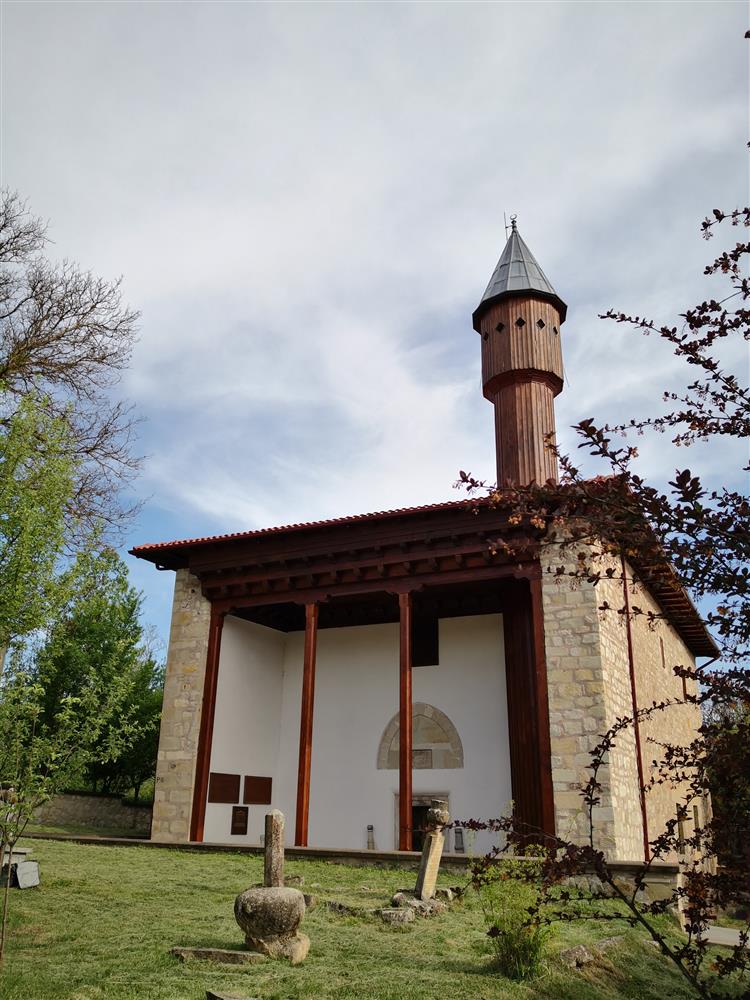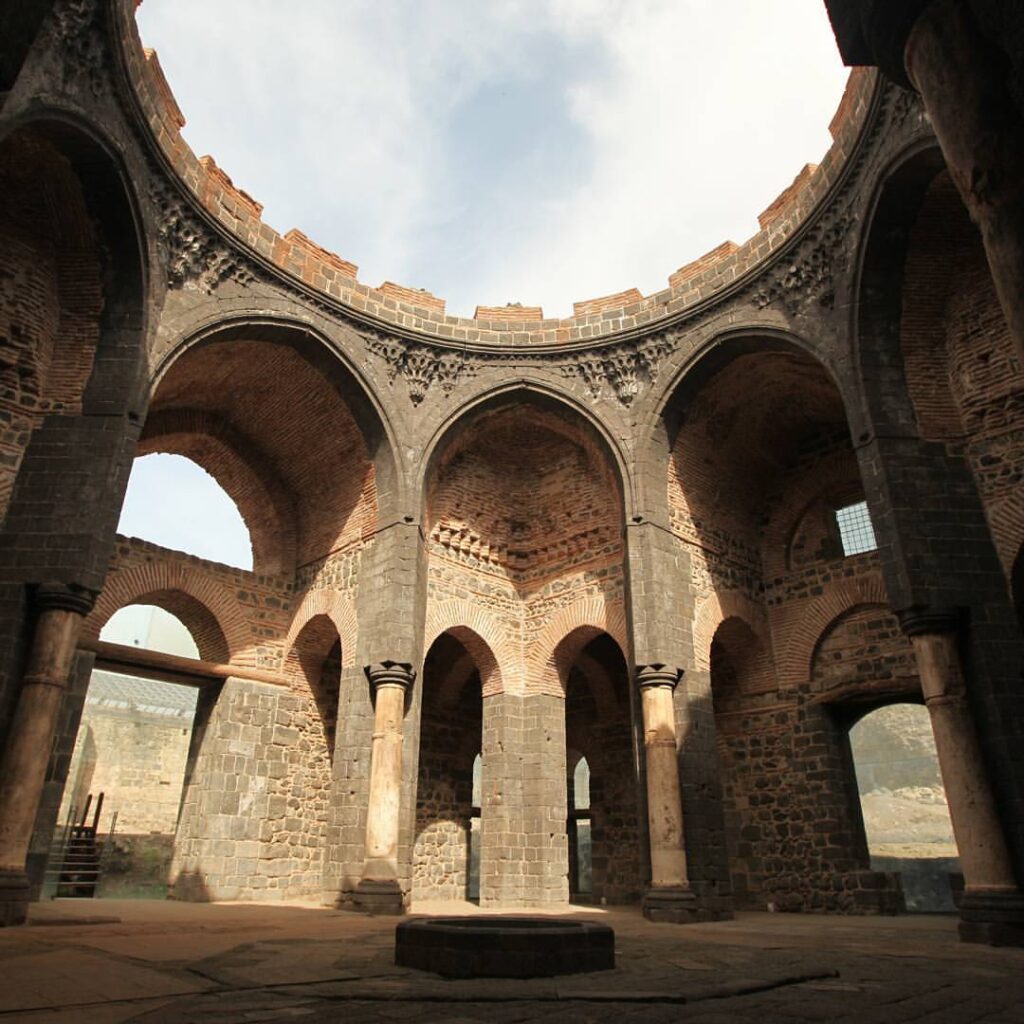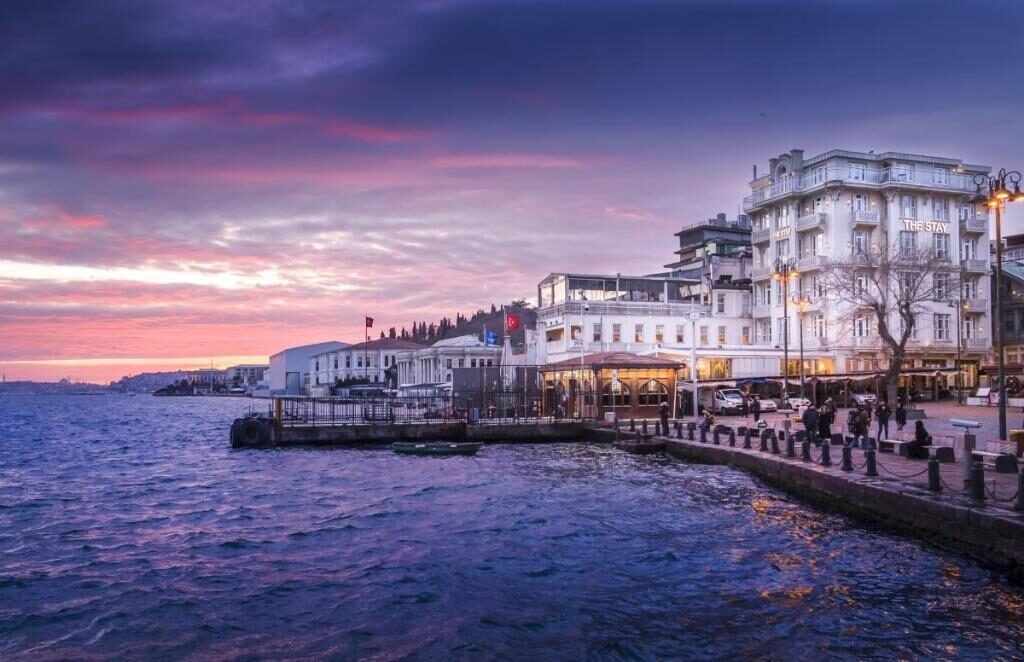UNESCO, a part of the United Nations, preserves the world’s history, architecture, and natural diversity. They do this by designating certain places as World Heritage Sites. Turkey has 21 such sites recognized by UNESCO. These sites are essential for their historical, scientific, and natural significance. Let’s explore 21 incredible Turkey UNESCO Sites that can inspire your travels.
Table of Contents
1. Gordion (Ankara) 2023

The Ancient City of Gordion, which was the capital of the Phrygians, is one of Turkey’s recent additions to the UNESCO World Heritage Sites. Located in the Polatlı district of Ankara, this ancient city holds great historical significance. It dates back to around 2500 BC and features architectural remains, mounds, inscriptions, ceramics, city walls, and impressive structures that provide insights into its ancient urban life, starting from the 1200s BC. Today, visitors can still explore and appreciate these well-preserved remnants of the past.
2. Medieval Wooden Hypostyle Mosques of Anatolia 2023

These mosques are among the newest additions to the UNESCO World Heritage List. The common feature of the mosques in the list, which includes Konya-Eşrefoğlu Mosque, Kastamonu-Mahmut Bey Mosque, Eskişehir-Sivrihisar Mosque, Afyon-Afyon Ulu Mosque, and Ankara-Arslanhane Mosque, is that they were built between the 13th and 14th centuries and used a unique wooden system.
3. Arslantepe Mound (Malatya) 2021

Arslantepe Mound, situated in the Battalgazi district of Malatya, is an ancient site that dates back approximately 6,000 years. It holds significance as a religious and cultural center, believed to be associated with the emergence of one of the earliest state structures. Located 12 kilometers southwest of the Euphrates River, the mound stands impressively at 30 meters high. Arslantepe has yielded a treasure trove of archaeological findings spanning from the Late Chalcolithic period to the Iron Age. It continues to captivate both experts in the field and history and culture enthusiasts who visit the site.
4. Göbeklitepe (Şanlıurfa) 2018

Göbeklitepe, a site that has rewritten history, is situated 15 kilometers from Şanlıurfa. It features open-air religious structures dating back 12,000 years, with a total of 20 such buildings identified. These remarkable obelisks and temples, some reaching heights of 6 meters, are considered the world’s oldest known temples. They continue to captivate both experts and visitors with an interest in history and culture.
5. Aphrodisias (Aydın) 2017

Let’s begin with Ara Güler, who stumbled upon a historical treasure while trying to open a dam in Aydın’s Geyre town in 1958. Lost and wandering through a village, Güler noticed that the villagers lived amidst ancient ruins. He began taking photographs of these ruins and continued his research upon returning to Istanbul. Unable to find much information, he sent the photographs to Times magazine.
Ara Güler returned to the region to take more color photographs, and his images gained international recognition. Subsequently, American archaeologists conducted research in Geyre, revealing the ancient city of Aphrodisias, which dates back to 500 BC and is named after the goddess Aphrodite. What makes this ancient city remarkable is its exceptional representation of Greek and Roman architectural and urban features from that era.
6. Ani Archaeological Site (Kars) 2016

The city of Ani is located on the banks of the Arpaçay river, approximately 48 km from Kars and near the Turkish-Armenian border. This historic city, situated along the Silk Road, has been a home to numerous civilizations over the years. Its architecture reflects the influence of these diverse cultures. While it prominently features Armenian architectural styles, you can also find traces of Georgian and Seljuk architecture within this exceptional archaeological site.
7. Ephesus (Izmir) 2015

Ephesus is situated in the Selçuk district of Izmir and has a history dating back to around 6000 BC, reaching back to the Neolithic Age. This ancient city has withstood the test of time and is one of the largest Greco-Roman cities ever excavated. In the past, it was known as Asia Minor and served as the capital of the Anatolia province. Throughout its history, Ephesus transitioned from Greek to Roman control, leaving behind architectural and cultural remnants from both rich civilizations. Ephesus was a prominent hub in its heyday, boasting religious, commercial, cultural, and artistic significance that showcased the might of ancient Rome.
8. Diyarbakır Castle and Hevsel Gardens Cultural Landscape (Diyarbakır) 2015

Diyarbakır Castle and Walls are regarded as one of the most formidable and ancient structures globally, inspiring numerous folk songs and legends over the centuries. The castle stands out with its impressive bastions adorned with intricate reliefs and inscriptions. Additionally, Hevsel Gardens, with a history stretching back 8,000 years, has witnessed the presence of over 30 civilizations during its extensive existence, leaving behind traces from each of these remarkable eras.
9. Pergamon Multi-Layered Cultural Landscape Area (Izmir) 2014

Pergamon Multi-Layered Cultural Landscape Area is a vast ancient site with layers from various historical periods, including the Hellenistic, Roman, Eastern Roman, and Ottoman eras. This area comprises a total of 9 components, including Pergamon (a multi-layered city), Cybele Sanctuary, İlyas Tepe, Yığma Tepe, İkili, Tavşan Tepe, X Tepe, A Tepe, and Maltepe Tumuli. It’s a cultural landscape that preserves the historical values of the Hellenistic and Roman periods, offering a historical journey through structures from the Roman, Eastern Roman, and Ottoman periods.
10. Bursa and Cumalıkızık: The Birth of the Ottoman Empire (Bursa) 2014

Bursa and Cumalıkızık are cultural treasures that have endured over time and offer insights into the lifestyle of the Ottoman Period. Located on the southern slopes of Uludağ, Cumalıkızık is a remarkable example of Ottoman rural architecture with a history spanning 700 years. This village boasts original examples of traditional Ottoman architecture and civil structures and played a significant role in the history of Bursa, the initial capital of the Ottoman Empire. You can truly appreciate its historical significance by exploring the buildings in the Khans Area.
11. Çatalhöyük Neolithic Site (Konya) 2012

Çatalhöyük Neolithic City, situated in the Çumra district of Konya, is a remarkable ancient settlement that provides valuable insights into human history. Dating back to 7400 BC, during the Neolithic era, Çatalhöyük was home to approximately 10,000 people. This sprawling ancient city offers a unique opportunity to study the origins of social life and the transition to an agricultural society. Despite its substantial population for the time, Çatalhöyük exhibited a lack of social and economic differentiation, showcasing evidence of an organized way of life.
12. Edirne Selimiye Mosque and Social Complex (Edirne) 2011

The Selimiye Mosque and Social Complex, regarded as a pinnacle of Ottoman Era architecture, is truly a masterpiece. Constructed in the 16th century in Edirne in honor of Sultan Selim II, this mosque and complex is renowned as a masterpiece from the period of architectural excellence led by the architect Mimar Sinan. Its exceptional technical precision and aesthetic qualities have earned it a place of significance not only in Turkey but also in the global history of architecture.
13. Ancient City of Troy (Çanakkale) 1998

The Ancient City of Troy, situated in Teyfikiye Village within Çanakkale, is one of the most renowned ancient cities globally. Troy has always held significance due to its strategic location between the Asian and European continents, as well as its position between the Aegean and Mediterranean regions. Throughout history, Troy has been the scene of numerous wars and destruction. During excavations of this ancient city, which was destroyed and rebuilt nine times, various artifacts from these different layers have been discovered. Our knowledge of Troy primarily comes from the epics of Homer, a poet from Izmir, particularly through his works “The Iliad” and “The Odyssey.
14. Safranbolu City (Karabük) 1994

Safranbolu has historically been a significant and vibrant city due to its location along the route connecting the Black Sea coast to Western, Northern, and Central Anatolia. In the 18th century, it became an essential stop for trade between Asia and Europe. This city’s center, which has been under the rule of various civilizations including the Romans, Byzantines, Seljuks, and Ottomans, showcases the traditional urban character of the Western Black Sea region. It remains a valuable destination with its well-preserved traditional wooden houses and historic buildings.
15. Xanthos-Letoon (Antalya-Muğla) 1988

The Xanthos Ancient City, known for its historical significance and organic connection to the past, is situated in the Fethiye district of Muğla. In contrast, the Letoon Ancient City is located within the borders of the Kaş district in Antalya. These two ancient cities are separated by a distance of approximately 5 kilometers. Xanthos Ancient City held a pivotal role as a religious and administrative center in the Lykia region, and it carries the imprints of various civilizations, including the Hellenic, Persian, Roman, and Byzantine periods. The Letoon Ancient City, on the other hand, served as the sacred area associated with Xanthos and contains numerous temple ruins.
16. Hieropolis-Pamukkale (Denizli) 1988

The Pamukkale Travertines are a remarkable natural wonder formed by the flow of water rich in calcium oxide from Çaldağı in Denizli. These travertines are renowned for their distinctive and pristine white appearance. Nestled within this white landscape lies the Ancient City of Hierapolis, featuring remnants dating back to the late Hellenistic and early Christian eras. The sanctity of Hierapolis, which translates to “sacred city,” is attributed to its healing waters that have been benefiting people for millennia.
17. Mount Nemrut (Adiyaman) 1987

Mount Nemrut, situated at an elevation of 2,206 meters in the Kâhta district of Adıyaman, holds a special place on the UNESCO list. It is distinguished not only by its historical artifacts but also by its breathtaking sunrise and sunset vistas and the sense of energy it exudes. This mountain has earned its place in history as “the nearest point to the throne of Zeus in the heavens.” It captivates visitors with its statues and reliefs that unite gods from various cultures, a project initiated by Commagene King Antiochus I, who aimed to harmonize different cultural influences.
18. Hattusa: Hittite Capital (Çorum) 1986

Hattusa, now located in Çorum’s Boğazkale district, served as the central capital of the Hittite civilization. This significant archaeological site contains many remnants dating back to the 13th century BC, a period marked by reconstruction efforts. When you explore the temples discovered in Hattusa, often referred to as the “City of a Thousand Gods,” you’ll gain a deeper appreciation for why it earned this name.
19. Göreme National Park and Cappadocia (Nevşehir) 1985

Cappadocia has a rich history dating back to the Chalcolithic Period, and its otherworldly landscape took shape over time as volcanic lava from Mount Erciyes and Hasan Mountain eroded. You’ll encounter unique formations called fairy chimneys, especially in Ürgüp and Göreme, formed when sturdy rocks protected the less resistant layers beneath from water erosion. The Göreme region of Cappadocia boasts a history influenced by various civilizations, including the Hittites, Persians, Byzantines, and Seljuks, spanning from the 7th to the 13th centuries. It also served as a refuge for Christians escaping persecution in the 19th century and became a religious center. Numerous rock-carved sites illuminate various chapters of history in this region.
20. Historical Areas of Istanbul (Istanbul) 1985

Istanbul’s Historical Peninsula is a place of immense historical significance, having hosted numerous civilizations, witnessed pivotal events, and served as a hub of innovation and cultural exchange for thousands of years. This area is recognized as a UNESCO World Heritage Site due to its architectural, religious, and cultural treasures. It includes several zones: the “Archaeological Park,” encompassing the Hippodrome, Hagia Sophia, Hagia Irene, Little Hagia Sophia Mosque, and Topkapi Palace; the “Süleymaniye Conservation Area,” which covers the Süleymaniye Mosque and its surroundings; the “Zeyrek Conservation Area,” home to the Zeyrek Mosque and its vicinity; and the “Historical Walls Protection Area.” Each of these zones contributes to the rich tapestry of Istanbul’s history.
21. Divriği Grand Mosque and Hospital (Sivas) 1985

The Divriği Grand Mosque and Darüşşifa, constructed by the architect Ahlatlı Hürremşah under the patronage of Mengücek ruler Ahmet Şah and his wife Turan Melek, stand as masterpieces of architectural history. This mosque, along with its two-domed tomb and the adjacent hospital, showcases exceptional traditional stonework craftsmanship in Anatolia.






